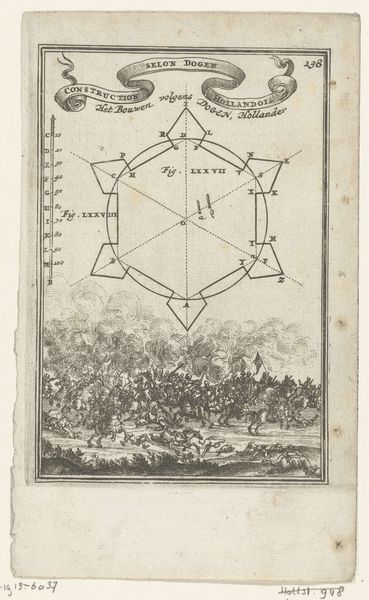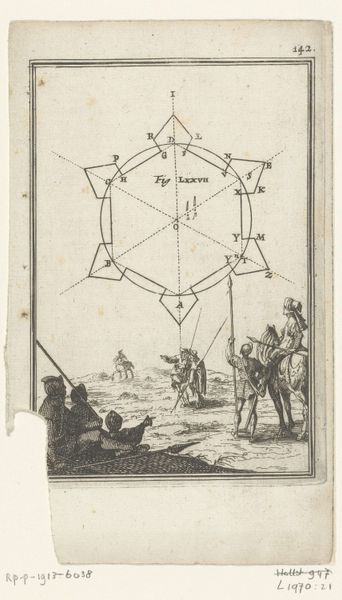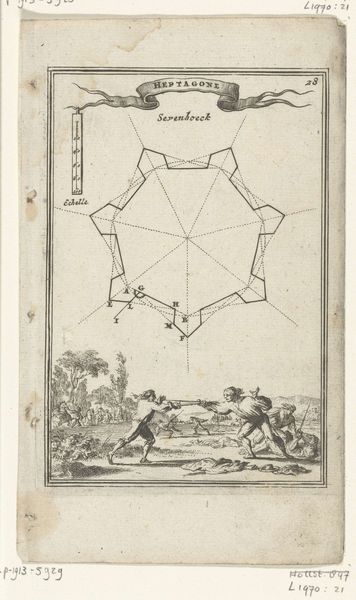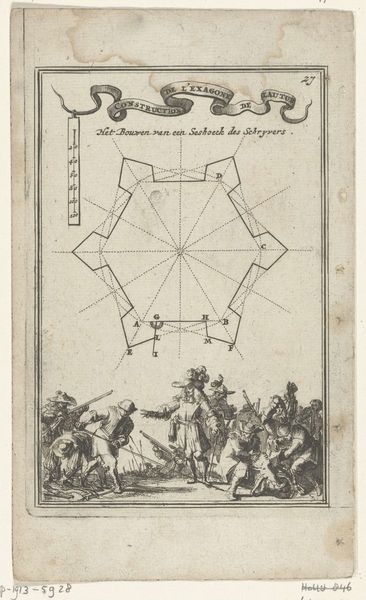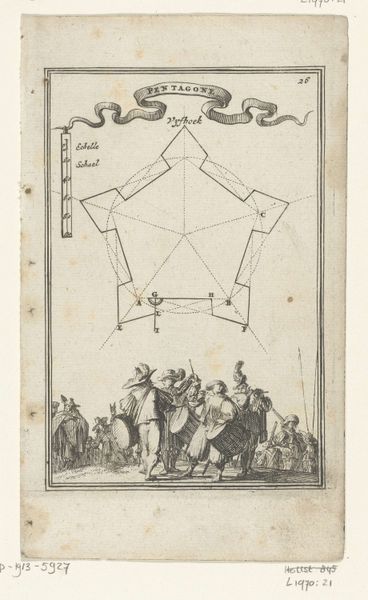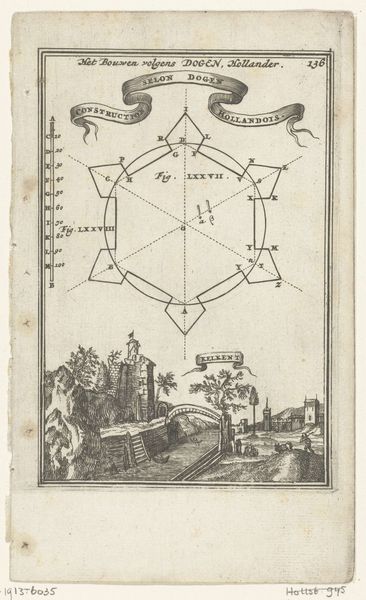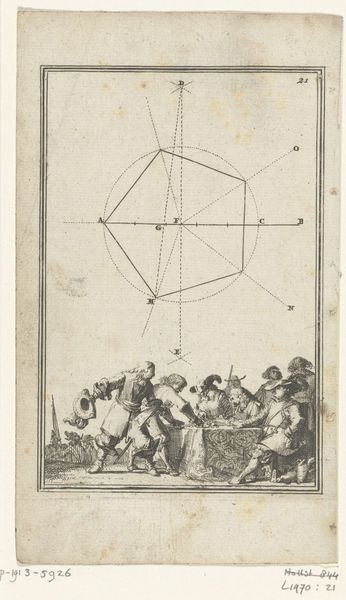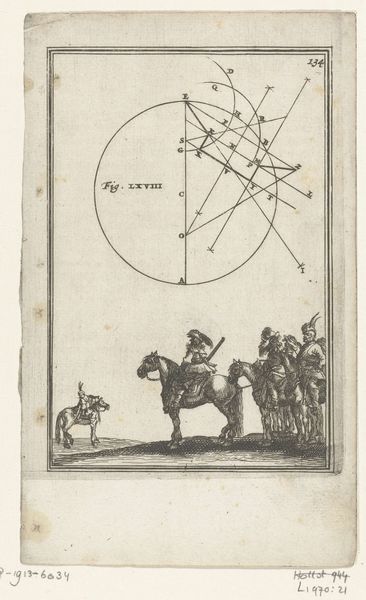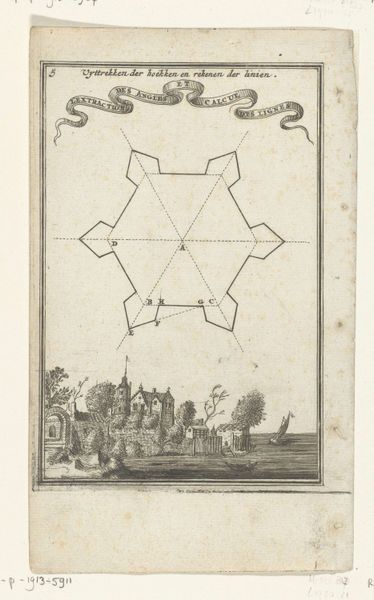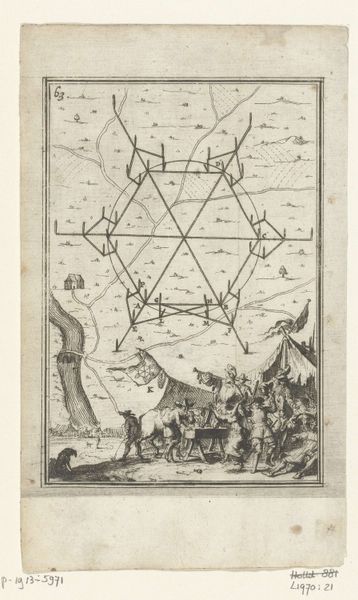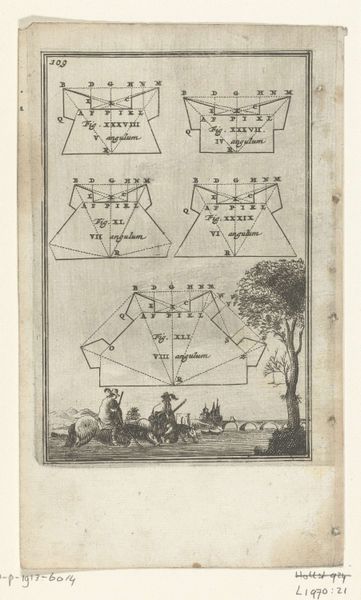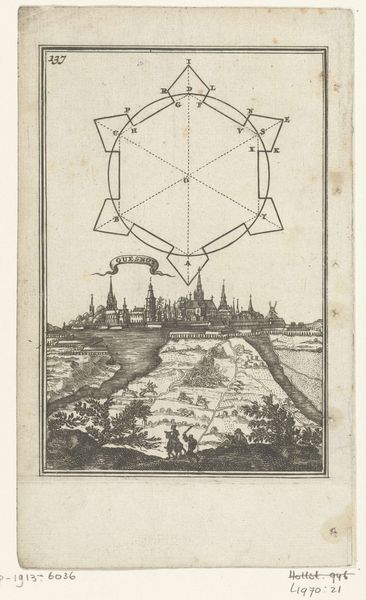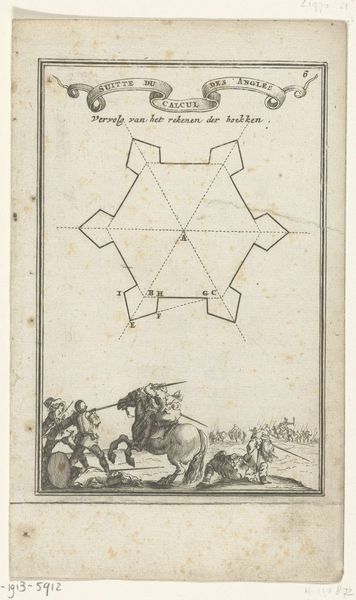
Illustratie voor 'Den Arbeid van Mars' van Allain Manesson Mallet 1672
0:00
0:00
romeyndehooghe
Rijksmuseum
print, engraving
#
baroque
# print
#
geometric
#
history-painting
#
engraving
Dimensions: height 186 mm, width 111 mm
Copyright: Rijks Museum: Open Domain
Curator: Before us we have Romeyn de Hooghe’s "Illustration for 'The Work of Mars'" created around 1672. It's currently held in the Rijksmuseum. Editor: My first thought is, it's surprisingly diagrammatic! The print combines almost sterile geometry with a rather animated battle scene. The contrast creates immediate visual interest. Curator: Indeed. De Hooghe offers us more than just aesthetics here; he's engaging with military and political strategies of the time. This engraving, produced in the Dutch Baroque style, functions as an illustration in Allain Manesson Mallet's book on fortifications and warfare. The geometric figure at the top illustrates how one would calculate the angles for a star fort and below, there is war. Editor: And those sharp angles of the fort design contrasted against the sweeping landscape filled with figures. Semiotically, the octagon with radial lines and its meticulously labeled points communicates a rational order imposed on a scene of, shall we say, rather chaotic and disordered conflict. Curator: Precisely! The lower register of the print shows soldiers and cavalry engaged in warfare; in addition, it reveals the very human consequences of the plans drafted above it. This reflects a tension that courses through Dutch history—this need for territorial sovereignty and global trade. The wealth needed to calculate geometry, and make star forts, comes from that chaotic field down below. The violence that has defined our modern world. Editor: It’s also fascinating to examine the material reality. Look at the line work! Each delicate stroke forming these intricate patterns and detailed figures creates depth and a sense of volume. De Hooghe’s skillful use of the engraving technique demonstrates a profound understanding of visual language. The varying densities create contrast within this monochrome. Curator: A language, I’d argue, that’s complicit in justifying the often inhumane realities of war. Consider this print in relation to others made at this moment that helped justify things such as colonialism and enslavement, where geometry helped "prove" whose land should be taken by another, "more advanced" country. Editor: It shows us how clean design cannot be completely morally innocent. After careful consideration, the clean design combined with brutal, warlike images feels like the precursor to propaganda, the language is a method. Curator: The artwork functions both as a technical document and also an indictment of statecraft and colonial politics. A study in contrasts and consequences. Editor: I'll not look at a geometry textbook the same way, ever.
Comments
No comments
Be the first to comment and join the conversation on the ultimate creative platform.
